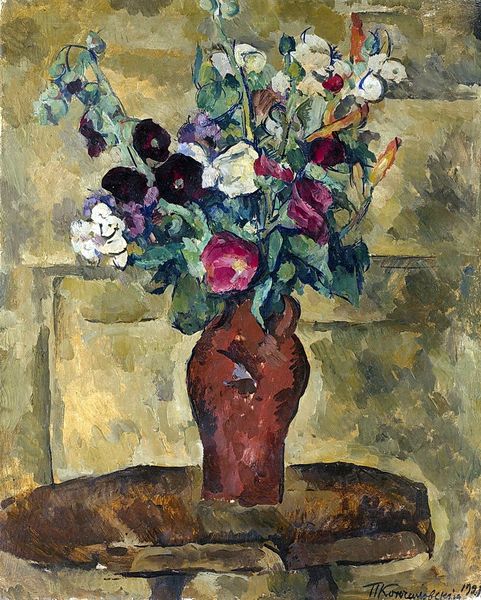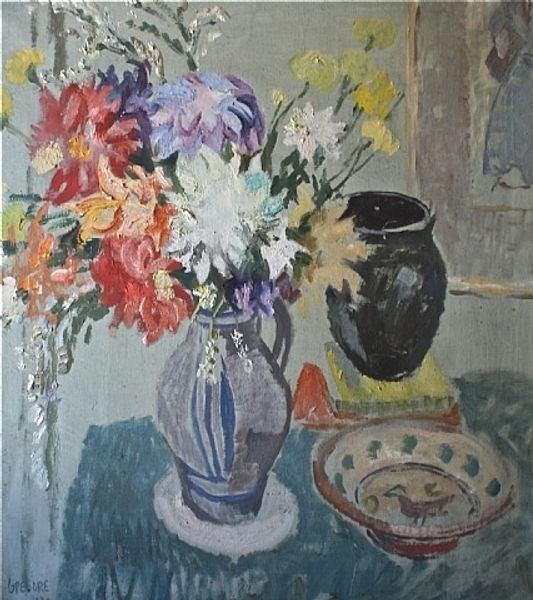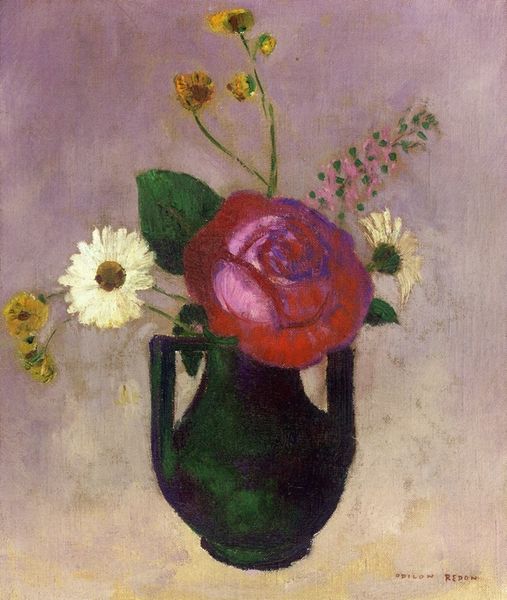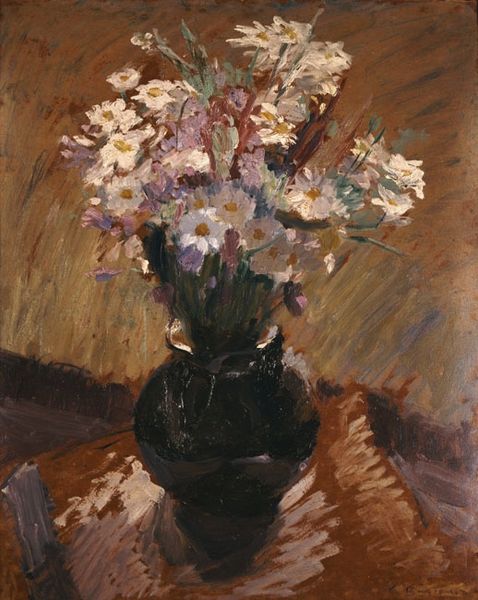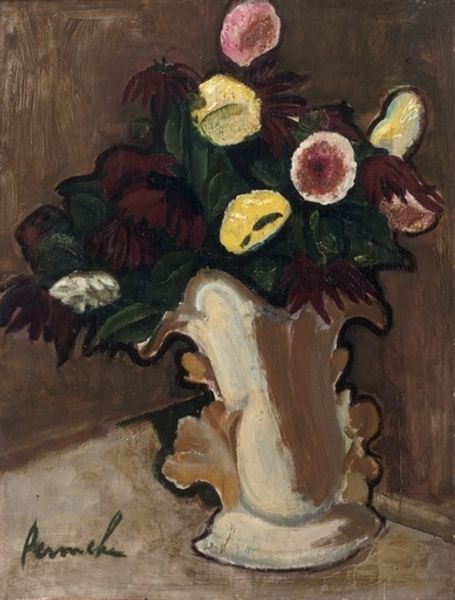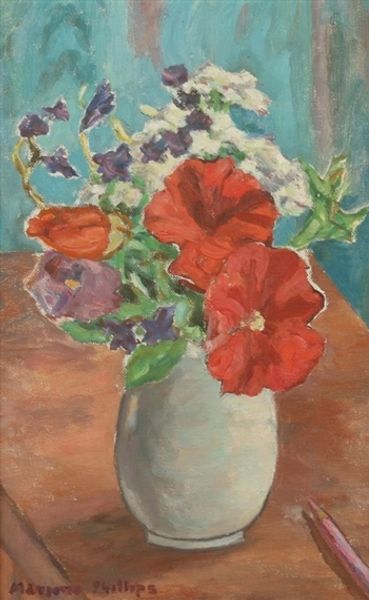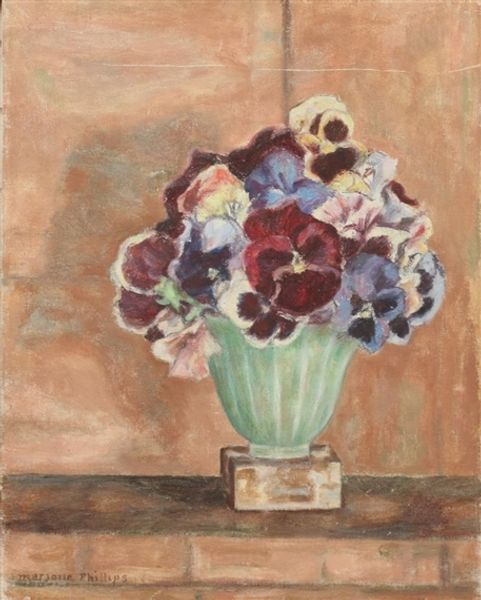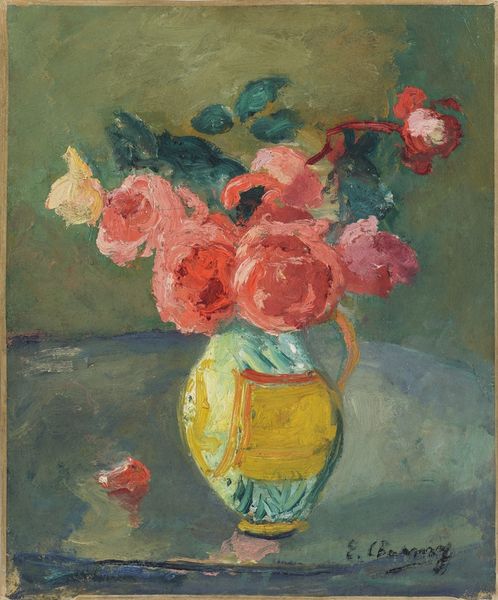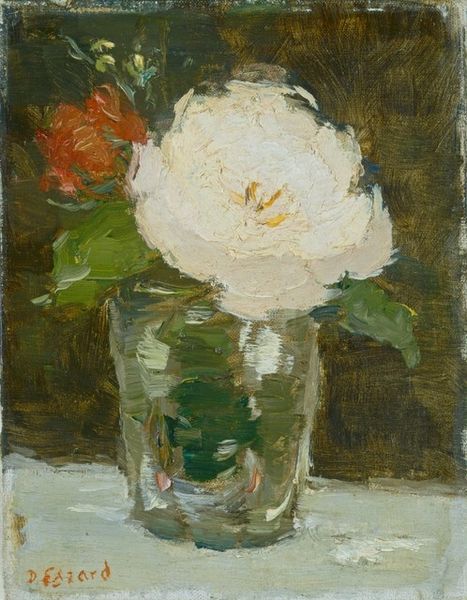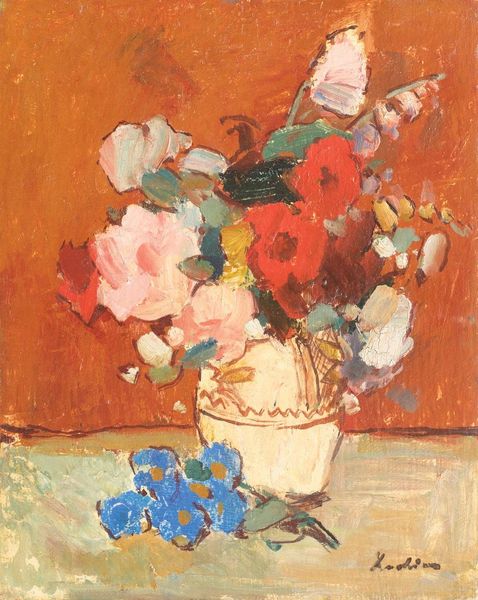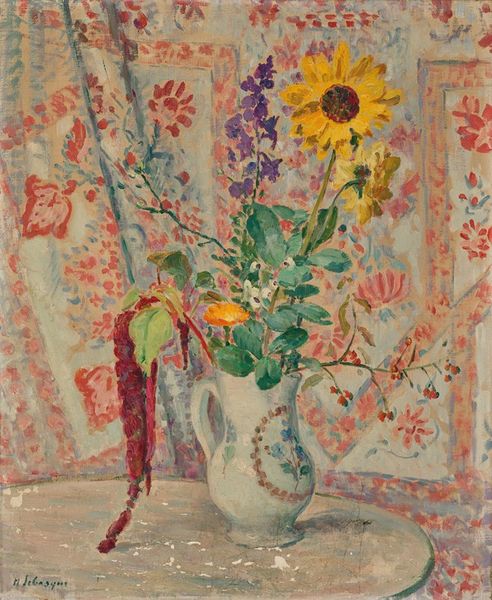
Dimensions: height 36.3 cm, width 23.7 cm, thickness 1.2 cm, depth 3.4 cm
Copyright: Rijks Museum: Open Domain
George Hendrik Breitner captured this ginger pot with anemones in an oil painting now displayed in the Rijksmuseum. As we look at this painting, let's consider the cultural context of still life in the late 19th and early 20th centuries. Breitner was Dutch, and the still life tradition was strong in the Netherlands, going back to the 17th century. Flower paintings like this one were popular, and often carried symbolic meanings. They also became a way for artists to explore new styles. Breitner was associated with the Amsterdam Impressionism movement, and you can see that in his loose brushstrokes and focus on capturing the fleeting effects of light and color. The art market was changing at this time, with more independent artists and commercial galleries. Breitner made a name for himself by capturing scenes of modern life, but he also painted more traditional subjects like this one. To understand Breitner's place in art history, you might want to look into the records of exhibitions where his work was shown, and read what critics wrote about his paintings at the time. This will give you a richer understanding of the social conditions that shaped his art.
Comments
No comments
Be the first to comment and join the conversation on the ultimate creative platform.
